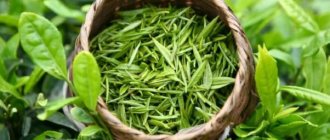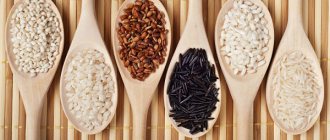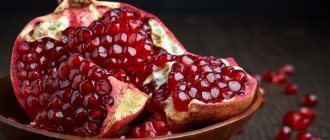Relevance
Tea can truly be called the national Russian drink.
Studies evaluating the effect of drinking tea as primary cardiovascular prevention are limited.
The authors of a new prospective cohort study assessed the association between tea consumption and the risk of atherosclerotic cardiovascular disease and overall mortality.
Which is better: loose leaf tea or bagged tea?
Compound
It is not difficult to recognize loose leaf tea in a cup, but the powder in a bag can be anything. Bagged tea most often consists of a mixture of several varieties of plants from different plantations. One sachet can concentrate up to five different ingredients [9]. The average person will not be able to distinguish the contents of the bag, but a tea professional can easily point out all the varieties that have been crushed.
Why sell a tea blend rather than just one variety? A combination of several varieties will definitely give a stable result - a recognizable taste and bright aroma. It is these characteristics that are important for a branded product. Moreover, tea leaves from different plantations may differ in quality. To compensate for the differences, companies began combining several ingredients. The formula of such tea is unstable and can change in different directions even daily. But the average consumer will not feel the difference at all - the taste and color will remain the same.
Quality
Not all manufacturers travel to plantations to fully control the production process. One tea bag contains approximately 2 g of raw materials. One gram is high-quality tea, but instead of the second they can put garbage. It depends on the region where the tea is grown, quality control, harvesting method, and the composition of the tea leaf itself.
A company that values its reputation will not use low-quality filler, but even impeccable managers have force majeure situations. In loose leaf tea it is much easier to track the same garbage; It is impossible to do this in a packaged version.
Flavor intensity
Loose and bagged tea can be made from identical raw materials. One sheet is crushed into pieces of the required size, then they are automatically separated and packed into different containers. Small particles release flavor and aroma faster and more intensely after contact with hot liquid. Why?
Juice is released from the cut leaf. The finer the sheet is cut, the greater the oxidation area and, accordingly, the strength. A drink from a tea bag will always be richer than loose leaf tea.
Interestingly, the concentration of raw materials in the bag is calculated for one standard 200 ml cup [9].
Aroma
Many people like to go to tea shops to smell the teas and make a decision based on the aroma. But does this make sense? No, none. The smell that comes from the collection does not belong to the tea leaves, but to the flavorings.
Manufacturers usually do not add artificial colors or odor enhancers. For this, natural ingredients are used, such as hibiscus. It simultaneously enhances the aroma of the drink and colors it in a bright red hue.
Natural ingredients such as essential oils and artificial ones, such as special food sprays, are used as flavoring agents. They are used only if the natural flavoring does not cope with its task.
Best materials of the month
- Coronaviruses: SARS-CoV-2 (COVID-19)
- Antibiotics for the prevention and treatment of COVID-19: how effective are they?
- The most common "office" diseases
- Does vodka kill coronavirus?
- How to stay alive on our roads?
Methods
The study included 100,902 adults from China who participated in the Prediction for ASCVD Risk in China (China-PAR) program. All individuals included in the study had lived in 15 Chinese provinces since 1998.
Information on tea consumption was obtained from questionnaires. Based on the amount of tea consumed per week, 2 groups were divided: drinking tea 3 or more times a week (habitual consumers) and never or rarely drinking tea (less than 3 times a week).
The researchers performed regression analyzes and calculated hazard ratios for atherosclerotic cardiovascular events and death.
Features of product production
Tea leaves are collected in the warmest and most picturesque places in the world: India, Sri Lanka, Japan, China, Africa. There are several ways to collect the “harvest”: machine and manual [3]. Companies that produce premium quality tea use the second method. Workers manually collect only the top two leaves and a bud: it is in this part of the plant that the special aroma, taste and benefits are concentrated. This collection method is called two leaves and one bud. Everything below the bud and the first two leaves is used by companies that focus on quantity rather than quality [4].
After picking, the tea leaves are dried. This happens in specialized "tea gardens". The moisture is completely removed from them and they become like fallen autumn leaves. Next, the dried tea base is sent into a huge drum, which gives it the required shape. Most often, manufacturers use a spiral shape or a regular straight line.
Only after these three stages - picking, withering and rolling - are the tea leaves fermented. During the oxidation process, separation into green/black/white and other varieties occurs.
Remember: green tea is not specially fermented. This process occurs naturally within the raw material itself at some stages of production, but the degree of oxidation of the finished product is minimal.
In Japan, handfuls of dried leaves are placed in steam drums, and in China, they are placed in huge hot frying pans for 30 seconds [4]. The enzyme cell juice of the raw material is deactivated and fixed in the tea leaf. What does it mean? The oxidation process does not start inside the plant, so the tea retains its natural color and rich nutritional composition.
The final stage is drying. The sheets are simultaneously dried and sorted. The product must match in color, structure, shape and size. During sorting, tea dust, seedings and broken pieces are sifted out.
results
- During a mean follow-up period of 7.3 years, 3683 atherosclerotic cardiovascular events, 1477 deaths due to atherosclerotic cardiovascular causes, and 5479 deaths from any cause occurred.
- Compared with those who never or rarely drank tea, drinking tea 3 or more times per week was associated with a 20% reduction in the risk of atherosclerotic cardiovascular events (hazard ratio, 0.80 (0.75–0.87)), death for atherosclerotic cardiovascular causes by 22% (hazard ratio, 0.78 (0.69–0.88), and all-cause death by 15% (hazard ratio, 0.85 (0.79–0.90).
- Tea drinkers had a 1.4 year longer period of life without atherosclerotic cardiovascular events.
- This association was stronger for study participants who drank tea 3 or more times throughout the observation period.
- Note that the association between tea consumption and cardiovascular events was observed for green tea, but not for black tea.
What are the benefits and harms of green tea?
The benefits of green tea have been proven in ancient times. Modern scientists confirm the beneficial properties of tea, but at the same time they also talk about its harm.
USEFUL COMPOSITION
The beneficial qualities of green tea are explained by the content of various substances in it. Tea contains more than 500(!) elements (calcium, magnesium, fluorine, phosphorus, etc.) and almost all groups of vitamins. Also, green tea benefits due to such components as:
CAFFEINE is the main alkaloid of green tea, thanks to which our body receives a surge of strength and a portion of vigor. But green tea does not contain caffeine in its pure form; here it is called theine. Theine has a milder effect than pure caffeine, it activates a person’s mental and physical activity, increases his performance, and lifts his mood.
MINERALS in green tea contribute to the normal functioning of all body systems. Maintaining the correct balance of minerals in the body is the key to strong immunity, healthy hair, nails, teeth, etc.
CAKHETINS are good antioxidants. The most powerful antioxidant of the four main tea cahetins is approximately 35-100 times stronger than vitamins
C and E. Just one cup of green tea a day is enough for this. to provide the body with 10-40 milligrams of antioxidants. Being a strong antioxidant, green tea reduces the likelihood of cancer.
SO WHAT IS THE BENEFIT?
- Green tea is an effective diaphoretic. It is recommended to drink it at elevated temperatures, fever, and various types of inflammation.
- It is especially useful for people suffering from diseases of the kidneys and genitourinary system, and also has a beneficial effect on the gastrointestinal tract and digestion in general.
- Drinking this tea has a positive effect on the functioning of the duodenum, gall bladder, liver and pancreas.
- It can increase attention and improve memory, can invigorate and relieve drowsiness, normalizes metabolism in the body and strengthens the nervous system, helps to get out of depression.
- The beneficial effects of green tea also extend to the cardiovascular system: the beneficial properties of green tea reduce the likelihood of atherosclerosis, improve the elasticity of the arteries, prevent the appearance of cholesterol plaques, increase the strength of capillaries, while the permeability of the walls of blood vessels is reduced and ascorbic acid is better absorbed.
- And he is also an excellent assistant for those who want to lose weight.
WHAT IS THE HARM?
Green tea is harmful to people suffering from nervous exhaustion. Caffeine, which is found in large quantities in green tea, stimulates the nervous system. In this regard, people suffering from nervous exhaustion may experience sleep disturbances and causeless loss of strength.
It is better not to drink green tea before bed at all, as there is a risk of insomnia. Green tea is not recommended for those who suffer from tachycardia, as well as increased excitability.
People with blood pressure problems can feel the harm of green tea. It often lowers blood pressure, so you should not drink it in large quantities if you have hypotension, and drinking green tea for acute hypertension is completely contraindicated.
If you have any chronic disease, then green tea should be drunk with caution, it can cause an exacerbation of the disease and worsen your health. For example, with peptic ulcers, drinking green tea can lead to increased acidity of gastric juice.
If you have gout, it is better not to drink green tea at all, as it is rich in purine bases!
HOW TO DRINK GREEN TEA CORRECTLY
Drinking green tea on an empty stomach is harmful, as it irritates the mucous membrane of even a healthy stomach. And if you drink green tea after eating, then on the contrary, it helps your digestion.
Green tea is much healthier if you drink it throughout the day rather than in the evening or at night. Drinking fresh green tea before bed, having a tonic effect, instead of the expected rest and sweet sleep, will give you a headache and fatigue.
Never alternate green tea with alcoholic drinks! This is a severe blow to your kidneys.
Do not take pills or other medications with green tea - it will remove all chemicals from the body, thereby reducing the effectiveness of the medications.
The harm of green tea may lie in its low-quality varieties. Try to find real, fresh green tea, not the poor version in cheap tea bags.
And remember the golden rule: EVERYTHING IS GOOD IN MODERATION. This also applies to green tea.
Store tea in tin jars with a tight-fitting lid, or better yet, in wooden boxes. Green tea cannot be stored in paper bags: they do not close tightly and allow moisture to pass through.
Head dept. 2nd t/o L.M. Dumpling
How to brew tea correctly
Green tea should be brewed with barely boiling water.
There are several secrets to brewing tea, thanks to which it will not only be healthy, but also very tasty.
The most important points for getting a good drink are high-quality water and high-quality tea leaves. You cannot take water from the tap. Ideally, you need spring water for tea, but in city conditions purified filtered water is suitable.
Next - dishes. Do not use a metal container. Ideally, tea is brewed in a porcelain or ceramic teapot. The water should be “white spring” - this is a state when it has not completely boiled, but bubbles have just begun to appear.
Let's look at the step-by-step instructions for brewing green tea:
- Boil water in a kettle and prepare the teapot.
- When the water starts to boil, you need to turn it off and wait a couple of minutes for it to cool to 80 degrees.
- The teapot needs to be warmed up; to do this, add a couple of tablespoons of boiling water.
- Next, the tea leaves are poured at the rate of one teaspoon of tea per cup of boiling water.
- Pour boiling water into the teapot and wait 4-5 minutes.
It is recommended to use large-leaf tea; it is considered to be of the highest quality - tasty and healthy.
There are hundreds of recipes for brewing tea - but this one is the classic and most popular.
Stress resistance
Green tea is also effective in combating stress and anxiety. For example, L-theanine, an amino acid that helps relieve tension, gives it relaxing properties.
L-theanine promotes the creation of alpha waves in the brain, relaxing the mind in stressful situations while maintaining alertness. Every day, researchers are discovering more and more benefits of L-theanine.
It has also been linked to improved cognitive function, reduced anxiety, improved sleep quality and overall well-being.
Scientists believe that theanine may reduce anxiety because it acts on the neurotransmitters GABA, increasing their concentration, which is important for those under stress.
GABA affects the levels of two other “feel good” neurotransmitters, serotonin and dopamine, known as the feel-good hormones. Increased dopamine levels also lead to improved memory and learning ability.
A study published in 2012 tracked the effects of L-theanine and caffeine on mental performance. Participants were exposed to several psychological as well as physical stressors, and they received either placebo alone, L-theanine and placebo, or caffeine and placebo. Research has shown that theanine reduces blood pressure and anxiety.
Moreover, even the caffeine contained in green tea enhances stress resistance. Its relatively small amount (30 to 50 mg per cup) may not cause hyperactivity or nervousness like a cup of coffee. This dose of caffeine keeps the brain active by blocking adenosine, an inhibitory neurotransmitter that acts as a central nervous system depressant. It also increases the concentration of “good” neurotransmitters and the release of dopamine.
Therefore, when under stress, it is better to give up coffee in favor of green tea.
Brief conclusions
- Green tea contains up to 200 biologically active compounds, which explains its special health benefits.
- Green tea promotes healthy brain function.
- Antioxidants contained in green tea have an anti-aging effect and can prolong the beauty and youth of the skin, including protecting it from photoaging.
- Green tea is also effective in combating stress and anxiety.










